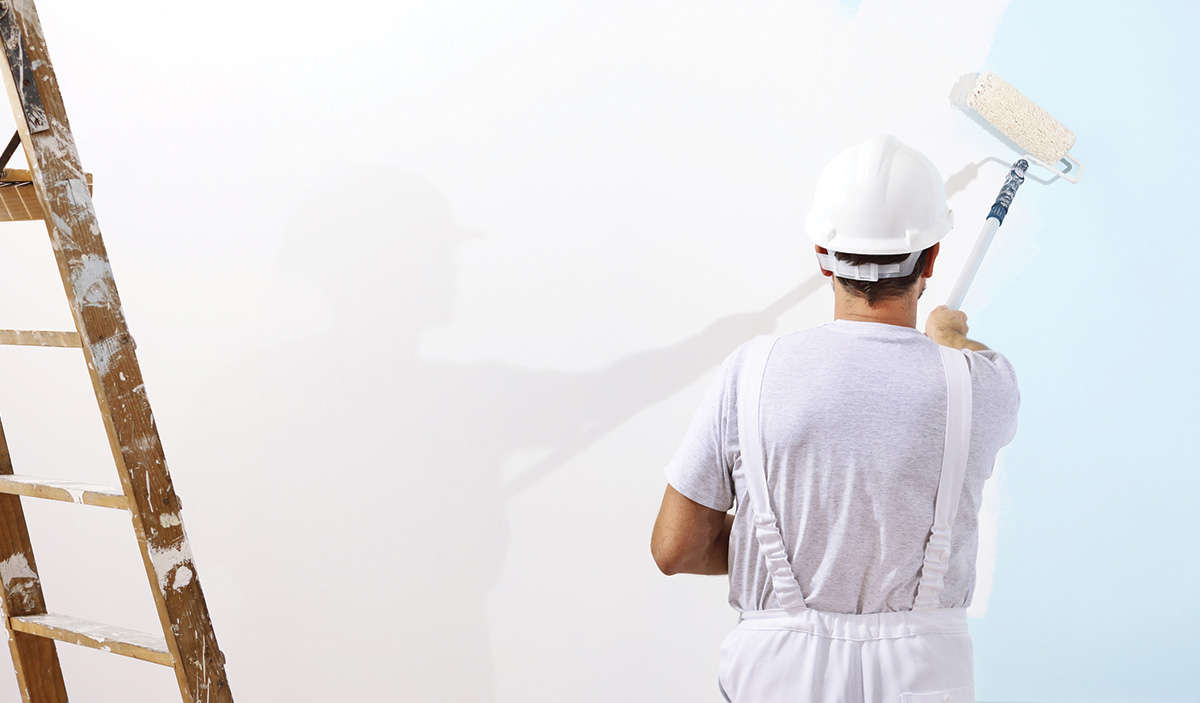If you are looking to update your home and save a bit of money, painting might be the project for you. Painting is one of the most attainable DIY projects for a homeowner. Before you begin, it’s important to do a little research to make sure the investment is worth the effort.
Supplies
This list will get you started with what you will need to buy on your next trip to the hardware store.
Prep Supplies
Items include – but are not limited to – scrapers, fine grit sandpaper, spackle, putty knife, magic erasers, ladder, drop cloth, plastic, and tape.
Paint/Primer
Once you have decided on a color and brand of paint, you will need to decide how much to buy. The manufacturer website may provide a calculator tool to help determine how much paint you will need per square foot. Consider using an alcohol-based primer to ensure a full, even coverage.
Brushes/Rollers
Pros tend to recommend 9” to 18” rollers and a ½-inch nap to hold the paint without too much texture. If the room is tall, purchase an extendable handle that attaches to your roller. A medium sized synthetic angled brush will be your best friend. The angle will help you cut in corners, base boards, and ceilings. For harder to reach spots, consider buying a few smaller brushes as well.
Prep the Space
Before you start anything, remove or cover furniture in the room to avoid drywall dust from sanding and prepping. Protect your flooring with a drop cloth or plastic. Remove light switch and outlet covers in the room.
Survey the area for peeling or flaking paint. These spots will need to be scraped or sanded then rinsed before adding primer. Fill in any nail holes with spackle and putty knife. Once the spackle is dry, sand to make flush with the wall and rinse. Magic erasers work wonders for scuffs, pencil marks, and greasy spots. Tape off baseboards, wall corners, windows, and ceilings. If you are skilled with an angled brush, you can skip this step and cut in these sections. These beginning steps can be tedious, but the extra attention to detail will give your project that professional look.
Prime
You are now ready to start priming the surface. It’s worth spending a few extra dollars on a quality primer. The pros generally use alcohol primers to seal in stains and cover nearly anything. Depending on the color of your paint, one primer coat will generally do the trick. Make sure to wait for the primer to fully dry before applying your next coat.
Paint
Once the primer is completely dry, it’s time to paint! When using a paint roller, roll the paint in an overlapping “w” motion to avoid roller marks. You might benefit from an extendable handle that attaches to your roller. Give plenty of time between coats according to the manufacturer’s instructions. Make sure to wrap your paint trays, rollers, and brushes with plastic while you wait.
Painting is a lot of work, but it will be worth the effort in the end. Your space will feel fresh and you can be proud of a job well done!
Topics: Pocket Change, Education



